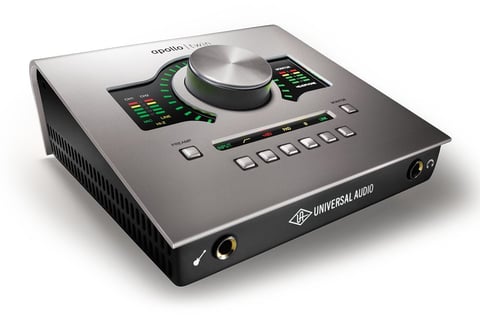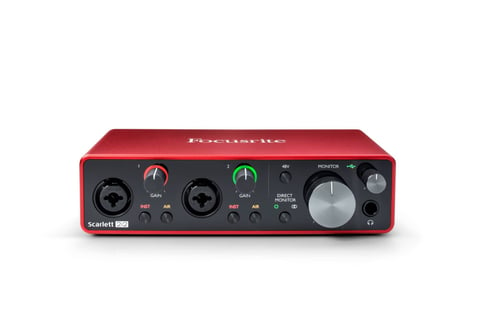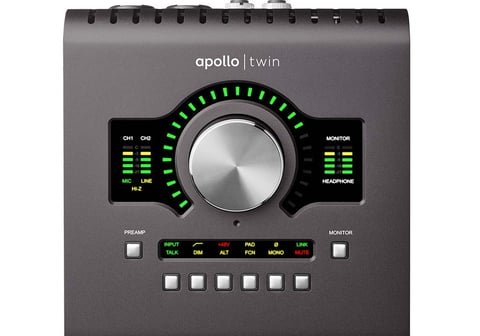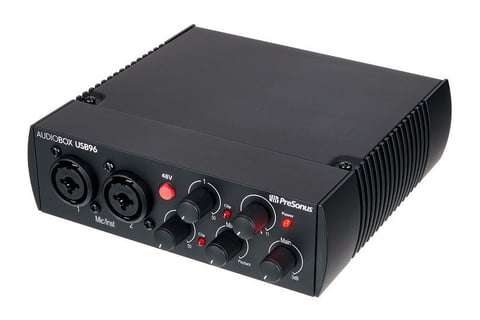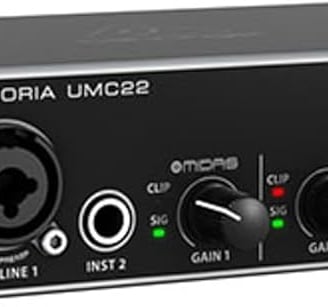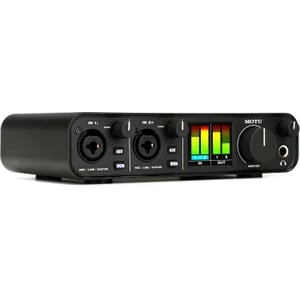Top 5 Audio Interfaces for Home Studios in 2025: Essential Gear for Modern Producers
These top 5 audio interfaces for home studios in 2025 offer exceptional sound quality, low latency, and user-friendly features that cater to both beginners and experienced producers. These devices have been carefully selected based on their performance, reliability, and value for money. By investing in one of these interfaces, you can elevate your home recordings to professional standards and unleash your creative potential.
AUDIO INTERFACE
Top 5 Audio Interfaces for Home Studios in 2025: Essential Gear for Modern Producers
Audio interfaces are essential tools for any home recording setup, bridging the gap between your instruments, microphones, and computer. In 2025, the market offers a wide range of options to suit various needs and budgets. Choosing the right interface can significantly impact your recording quality and workflow efficiency.
The top 5 audio interfaces for home studios in 2025 offer exceptional sound quality, low latency, and user-friendly features that cater to both beginners and experienced producers. These devices have been carefully selected based on their performance, reliability, and value for money. By investing in one of these interfaces, you can elevate your home recordings to professional standards and unleash your creative potential.
1) Focusrite Scarlett 2i2
The Focusrite Scarlett 2i2 remains a top choice for home studios in 2025. This compact audio interface offers excellent sound quality and reliability at an affordable price point.
With two inputs and outputs, the 2i2 is perfect for recording vocals and instruments simultaneously. The fourth generation model brings improved features like Auto Gain and Clip Safe, making it even easier to capture clean recordings without distortion.
You'll appreciate the high-quality preamps, which provide clear and detailed sound. The interface supports sampling rates up to 192kHz and 24-bit depth, ensuring professional-grade audio fidelity for your projects.
Connecting the Scarlett 2i2 to your computer is simple thanks to its USB-C port. The device is bus-powered, eliminating the need for an external power supply and enhancing portability.
The interface comes bundled with useful software, including Pro Tools First and Ableton Live Lite. This gives you a complete recording setup right out of the box.
For beginners and experienced producers alike, the Focusrite Scarlett 2i2 offers an excellent balance of features, sound quality, and ease of use. Its continued popularity is a testament to its reliability and performance in home studio settings.
2) Universal Audio Apollo Twin
The Universal Audio Apollo Twin stands out as a top choice for home studios in 2025. This compact desktop unit offers professional-grade audio quality and powerful features.
You'll find two high-quality microphone preamps and an instrument input on the Apollo Twin. It provides pristine audio conversion at up to 24-bit/192kHz resolution.
One of the Apollo Twin's standout features is its onboard DSP processing. This allows you to run Universal Audio's renowned plugin emulations with near-zero latency, freeing up your computer's CPU.
The interface comes in two variants: the Duo with two DSP chips and the Quad with four chips. This flexibility lets you choose based on your processing needs.
Connectivity is handled via Thunderbolt 3, ensuring lightning-fast data transfer and low latency. The Apollo Twin also serves as an effective monitor controller when paired with rackmount units.
Audio quality on the Apollo Twin is exceptional, with ultra-clean preamps and converters. This makes it suitable for both recording and mixing tasks in your home studio.
While the Apollo Twin comes at a higher price point than some competitors, many users find the investment worthwhile. Its combination of audio quality, DSP processing, and plugin ecosystem makes it a powerful tool for home studio production.
3) PreSonus AudioBox USB 96
The PreSonus AudioBox USB 96 remains a top contender for home studios in 2025. This compact audio interface offers exceptional value for its price point, making it an attractive option for beginners and budget-conscious producers.
You'll find two combo XLR/TRS inputs on the front panel, allowing you to connect microphones or line-level instruments. The interface features Class A microphone preamps, ensuring clean and transparent recordings of your vocals and acoustic instruments.
With its 24-bit/96 kHz recording capability, the AudioBox USB 96 delivers professional-quality audio. You can capture your performances with clarity and detail, giving your productions a polished sound.
The zero-latency monitoring feature lets you hear yourself in real-time while recording, eliminating any distracting delays. This is particularly useful when laying down vocal tracks or recording guitar parts.
MIDI input and output are included, allowing you to connect and control MIDI instruments or external hardware. This versatility expands your creative options in the studio.
The AudioBox USB 96 is compatible with most digital audio workstations (DAWs), giving you flexibility in your software choices. It comes bundled with PreSonus Studio One Artist, providing you with a capable DAW to start recording right away.
You'll appreciate the rugged metal construction, which ensures durability for both home and mobile recording setups. The compact size makes it easy to transport if you need to record on location.
4) Behringer UMC22
The Behringer UMC22 is a compact and affordable audio interface that packs a punch for home studios. This versatile device offers 2-in/2-out USB connectivity, making it easy to integrate into your setup.
You'll find a high-quality MIDAS-designed preamp in the UMC22, ensuring clean and transparent audio capture. This preamp provides +48V phantom power, allowing you to use condenser microphones for vocal and instrument recordings.
The interface features a combination XLR/TRS input for microphones and instruments, giving you flexibility in your recording options. A separate instrument input lets you plug in your guitar or bass directly.
Monitor your recordings with zero latency using the direct monitor switch. This feature allows you to hear your performance in real-time without any delay.
The UMC22 supports sample rates up to 48kHz and bit depths up to 16-bit, delivering good quality audio for most home recording needs. While not the highest resolution available, it's more than adequate for many projects.
You'll appreciate the rugged metal construction of the UMC22, which helps protect it from the wear and tear of regular studio use. Its compact size makes it ideal for small home studio spaces or for taking on the go.
The UMC22 is compatible with popular DAW software, allowing you to start recording right away. Its plug-and-play nature means you can get up and running quickly without complex setup procedures.
While it may lack some advanced features of pricier models, the UMC22 offers excellent value for money, especially if you're just starting your home studio journey or need a reliable backup interface.
5) MOTU M2
The MOTU M2 is an excellent choice for home studio enthusiasts looking for a high-quality audio interface in 2025. This compact USB-C device offers impressive features that make it stand out in its price range.
With two inputs and outputs, the M2 provides ample connectivity for most home recording needs. You'll appreciate the ESS Sabre32 converters, which deliver superior audio quality for both recording and playback.
The preamps on the MOTU M2 are noteworthy, offering clean and transparent sound capture. You can expect minimal noise and coloration, allowing your recordings to shine through with clarity.
One of the M2's standout features is its large, full-color LCD screen. This display provides real-time level metering, making it easy to monitor your input and output signals at a glance.
The interface's build quality is robust, with a metal chassis that can withstand the rigors of regular studio use. Its compact size makes it ideal for small home studio setups or for musicians on the go.
You'll find the MOTU M2 to be user-friendly, with straightforward controls and a plug-and-play setup. It's compatible with most digital audio workstations, ensuring seamless integration into your existing studio setup.
The M2's latency performance is impressive, allowing for near real-time monitoring of your recordings. This feature is particularly useful when laying down tracks or during live streaming sessions.
Essential Features for Home Studio Audio Interfaces
When selecting an audio interface for your home studio, focus on connectivity options and preamp quality. These features significantly impact your recording capabilities and sound quality.
Connectivity Options
USB connectivity is common in modern audio interfaces, offering plug-and-play simplicity. The Audient iD4 features USB connectivity, making it easy to connect to your computer.
Thunderbolt interfaces provide faster data transfer rates, reducing latency during recording. This can be crucial for real-time monitoring.
Consider the number and types of inputs and outputs you need. XLR inputs are essential for microphones, while 1/4" inputs accommodate instruments like guitars and keyboards.
MIDI connectivity allows you to connect keyboards and controllers directly to your interface. This integration streamlines your setup and reduces cable clutter.
Preamp Quality
High-quality preamps are crucial for capturing clean, detailed recordings. Look for interfaces with transparent, low-noise preamps to ensure your recordings are clear and professional-sounding.
Some interfaces, like the SSL 2+, feature colorization options that emulate the sound of classic analog consoles. This can add warmth and character to your recordings.
Pay attention to the maximum gain offered by the preamps. Higher gain allows you to effectively record quieter sources without introducing excessive noise.
Check for phantom power capability if you plan to use condenser microphones. Most modern interfaces include this feature, but it's always worth confirming.
Choosing the Right Audio Interface for Your Setup
Selecting an audio interface involves considering your budget and ensuring compatibility with your digital audio workstation (DAW). These factors will significantly impact your recording quality and workflow efficiency.
Budget Considerations
When choosing an audio interface, your budget plays a crucial role. Entry-level interfaces like the Focusrite Scarlett series offer excellent value for beginners, typically ranging from $100 to $200. They provide good sound quality and essential features for home recording.
Mid-range options, priced between $200 and $500, often include more inputs/outputs and better preamps. These are ideal if you plan to record multiple instruments simultaneously.
High-end interfaces, costing $500 and above, offer professional-grade components and advanced features. They're suitable for serious producers and those requiring the highest audio fidelity.
Consider your long-term needs when budgeting. It's often worth investing in a slightly more capable interface to avoid upgrading soon after.
Compatibility With DAWs
Ensuring your audio interface works seamlessly with your DAW is crucial for a smooth recording process. Most modern interfaces are class-compliant, meaning they work with major DAWs without additional drivers.
Check the manufacturer's specifications for official DAW compatibility. Some interfaces offer deeper integration with specific DAWs, providing enhanced functionality or easier setup.
USB interfaces are generally the most versatile, working with most computers and DAWs. Thunderbolt interfaces offer faster data transfer but may have limited compatibility with older systems.
For Windows users, ASIO driver support is important for low-latency performance. Mac users benefit from Core Audio, which provides native low-latency support for most interfaces.
Always verify compatibility with your specific DAW version before purchasing an interface to avoid potential issues.
